States Ambassador Luangmuninthone of the Lao PDR at an interview

By Publisher Lee Kyung-sik with Editor/Writers Choe Nam-suk, Joy Cho,
Ambassador Songkane Luangmuninthone of the Lao People’s Democratic Republic in Seoul said: “My country has abundance of natural resources such as forests, rivers, gold, silver, copper, lead, manganese, and many more. And the Republic of Korea is very welcome as development partner.”
Speaking at an exclusive interview with The Korea Post media, publisher of 3 English and 2 Korean-language news media both in print and Internet editions, Ambassador Luangmuninthone added, “Laos is also a signatory to the majority of sub-regional and regional free trade agreements, including AFTA, ASEAN plus FTA and RCEP, and we have MFN status with many developed countries, including the United States and the European Union.”
For the Republic of Korea who has incomparably large economic potential seeking investment overseas, it appears that the Lao PDR is one of the best target countries in the world.
In fact, Korean businesses, large and small, are known to be seeking new investment destination countries, and, in this regard, the Lao PDR is seen to be one of the best target countries.
As one may experience from meeting with Ambassador Luangmuninthone, the Laotian people are very friendly, helpful and kind, which may be considered one of the most important assets in the eyes of the Korean business leaders wishing to investment overseas.
In view of the advantages offered by the Lao government and the hard-working people in Laos, it appears that many Korean business companies would wish to start business in the country.
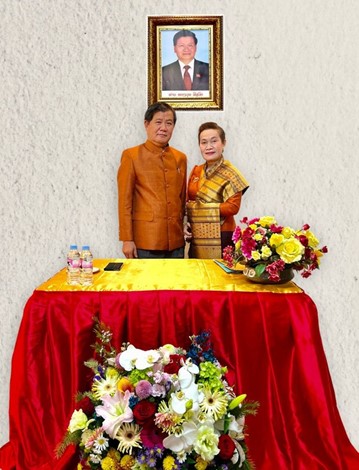
“Over the last 28 years,” said Ambassador Luangmuninthone, “we have seen a rise in bilateral trade between our two countries, and Republic of Korea ranks in the top ten of Laos’ trading partners.” He said, “Korean companies have invested USD800 million in various areas ranging from SME to hydropower projects.”

The Korean people, by nature, like to visit places, enjoy the scenery and have fun. In 2024 which is Visit Laos Year, the Korean tourists may enjoy a large variety of experiences such as touring historic temples and Buddhist monasteries, walking through lush jungles, and kayaking down crystal-clear rivers. There will also be several opportunities to learn about Lao culture from the north to the south, including as traditional festivi3es, music and dance performances.
Details of the interview follow:

Lao PDR at a glance:
Prior to the Covid-19 pandemic, the economy had continued to grow at a 6.5% annual rate. However, as with any other country in the region or the world, the rate of our GDP growth has been slowed due to higher inflation, higher food and energy prices.
Our government's two national agendas are to address economic and financial difficulties and to address drug issues. Moreover, the government adopted the 10-year Strategic Development Plan for 2016-2025, Vision 2030, and the 9th NSEDP for 2021-2025, with the goal of graduating from LDC status by 2026 and becoming self-sufficient and upper-middle income by 2030.

The main goal for Lao PDR is to maintain strong political stability, social order, and security while also integrating our economy with the international community, particularly with countries in the region. The most recent good news is that we have begun operating the high-speed railway (422 kilometers long) from Vientiane to Yunnan Province in China since December 2021. This has increased the attractiveness of Laos for investment, tourism, and our connection to the regional and world economy.
Bilateral Cooperation between Lao PDR and ROK:
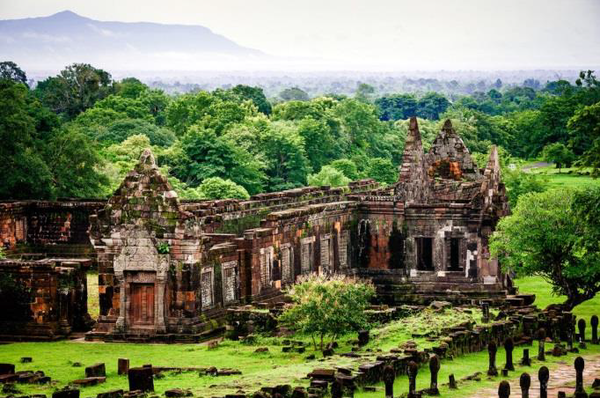
Lao PDR and the Republic of Korea have already started extensive bilateral relations and cooperation shortly after we opened our respective embassies in Seoul in 2001 and Vientiane in 1996. The pivotal moment in our bilateral relationship occurred during the historic visits by Prime Minister Bounhang Vorachith to the Republic of Korea in and then-2002 President Roh Moo-hyun to Laos in 2004. That demonstrated the high level of commitment shown by the leaders of our two nations to forging enduring bilateral ties. Over two decades later, the political dedication has been reaffirmed once more with the recent visits to the Lao PDR by H. E. President Moon Jae-in and the ROK by Prime Minister Thongloun Sisoulith in 2019.
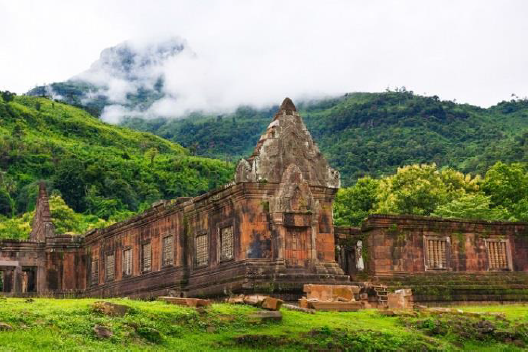
Laos-ROK development cooperation has expanded over time in various areas that meet the Lao Government's development properties. In terms of ODA and areas of cooperation, the ROK ranks fifth among major development partners in the Lao PDR, including human resource development and UXO, as well as poverty reduction models such as Saemeul Undong (the most popular development movement in Korea during the days of President Park Chung-hee of Korea).
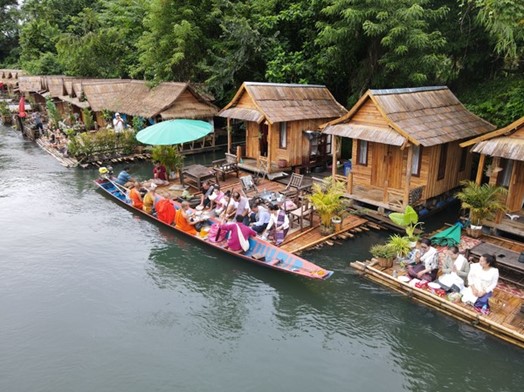
Cooperation between the Lao PDR and the ROK is not only limited to bilateral cooperation, but also multilateral cooperation at the regional level, which has always been successful, such as the Mekong-ROK cooperation framework, which has been upgraded to the Summit level, and the Lao PDR has supported various proposals of the ROK and in ASEAN. When Lao PDR assumes ASEAN Chairmanship in 2024, it is expected that ASEAN-Korea collaboration would be elevated from a strategic partner to a comprehensive strategic partnership.
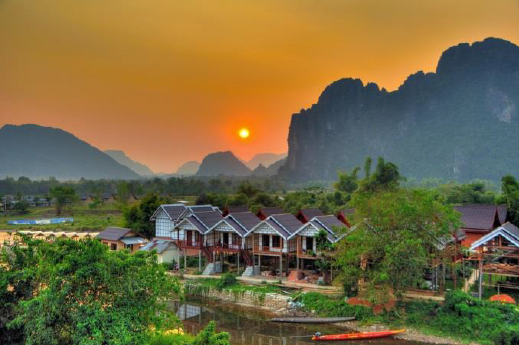
People to people exchange:
We currently have several platforms in the Republic of Korea to assist the Embassy in promoting economic and socio-cultural cooperation between Laos and Korea, such as the ASEAN Cultural House in Busan (ACH), the ASEAN-Korea Center (AKC) in Seoul, and three Honorary Consuls based in Busan, Daejeon, and Uijeongbu Cities.
In addition, the Korea-Lao Friendship Association in Seoul (KLFA), the Lao Cultural Center in Daegu, the Lao-Korea Exchange Association in Daegu, the Lao-Korea Exchange Foundation in Seoul, and the Lao-Korean Parliamentary Friendship Group are all very active in supporting the Lao PDR.

Those organizations have actively contributed to strengthening not only our two countries' economic and cultural cooperation, but also to sending donations in kind and goods to the Lao people in need. Various cultural exchanges have taken place in Korea in recent years, including Easy Access to Laos, Seoul Friendship Fair, and Seoul Friendship Festival; more recently, AKC organized the ASEAN Week, ASEAN food exhibition, ASEAN Fashion Show, and ASEAN cultural performance.
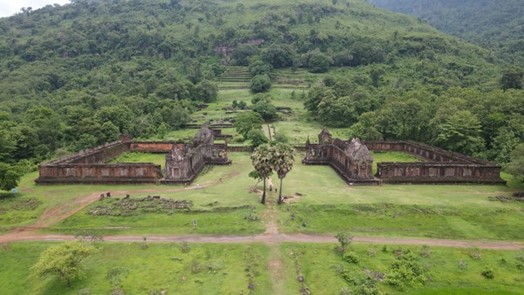
Trade and Investment:
Over the last 28 years, we have seen a rise in bilateral trade between the two countries. Although it is still small, the Republic of Korea ranks in the top ten of Laos' trading partners. Korean companies have invested nearly USD 800 million in a variety of areas ranging from SME to hydropower projects.
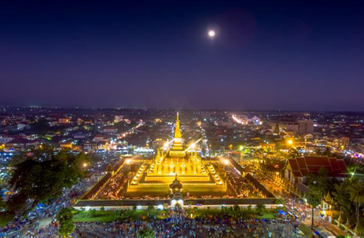
Trade:
Bilateral trade cooperation between the Lao PDR and the Republic of Korea dates back many decades. Various goods have been switched on and off on a regular basis, with a massive amount slightly increasing each year. On the Laotian side, the National Chamber of Commerce and Industry and the Department of Import and Export, Ministry of Industry and Commerce of the Lao PDR, has played a key role in dealing with import and export companies. Meanwhile, bilateral trade between Lao PDR and ROK was approximately 74 million USD in 2021, remaining consistent with the previous year's figures.

Exports from Laos to Korea totaled 11 million USD, while imports from Korea totaled 63 million USD. Trade volume reached 219 million USD over the last three years (2019-2021). There are only a few products from two countries. However, over the next 12 months, we would like to promote bilateral trade in order to increase Laos' export capacity for agricultural products such as coffee, rice, tropical fruits, vegetables, wood charcoal, wood, copper, and so on.
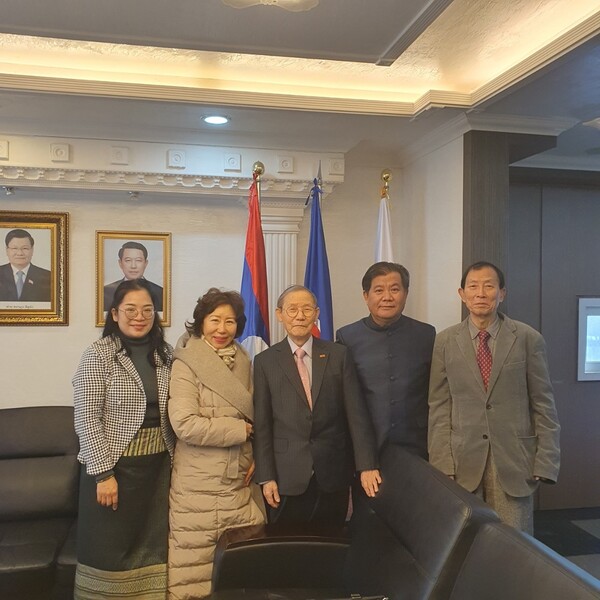
Recently, Korean products and services have gained popularity among the ASEAN Community, and Laos is one of the countries that have been affected by the "Korean Wave." Although some existing Korean brands, such as Kia, Hyundai, Samsung, and LG, account for the majority of local customer satisfaction, local customers are also interested in other products related to health and beauty, such as Korean cosmetics, healthy food and drink, and plastic surgery facilities.
Investment:
Laos has an abundance of natural resources such as forests, rivers, gold, silver, copper, lead, manganese, and so on. Laos is also a signatory to the majority of sub-regional and regional free trade agreements, including AFTA, ASEAN plus FTA, and RCEP, and we have MFN status with many developed countries, including the United States and the European Union.
The country has a one-stop service for investors as well as a favorable tax system. Laos can be used as a production base for Korean companies looking to expand into ASEAN, China, and other markets.
Therefore, we would like to welcome Korean companies to invest in Laos in the areas of energy, mining, infrastructure, agriculture, ICT, environment, education, and healthcare. Similarly, we would like Lao businessmen to invest in Korea as small owners of Lao food restaurants, massage, saunas, and other small businesses.
The Lao government also supports the following business sectors with incentives: High and modern technology business, Clean agriculture, Agro and forestry processing industry, Tourism development industry, Education, Healthcare, Infrastructure, Banking and microfinance, and Modern commercial and trading centers.
Zone incentives include a tax holiday and an additional tax holiday: Tax holiday lasts ten years, and another lasts five years. A tax holiday of four years, with an additional tax holiday of three years, and as specified in the SEZ Decree.
In comparison to our neighbors, such as Vietnam and Thailand, big Korean Chaebols are less active in Laos. However, there are some active Korean companies, such as: the Booyoung Group Company, which established Booyoung - Lao Bank, golf clubs, hotels, and others. The Kolao Group imports automobiles, electronic - furniture products, financial services, construction, Korean Western Power, SK Engineering and Construction Company, and other Korean companies. These businesses have contributed significantly to the local economy by paying taxes and employing local residents.
Lao Workers in Korea:
Over the years, the Ministry of Labor and Social Welfare of the Lao PDR has collaborated with the Ministry of Employment and Labor of the Republic of Korea and related agencies to arrange for the delivery of Lao workers to work in Korea through two systems: delivery through the Employment Permit Service System (EPS) and delivery through the Seasonal Worker System (SWP), which now has a total of 3,575 Lao workers, including 1,126 women. In this regard, the number of Lao workers is expected to increase in the future because Lao workers are more hardworking and attractive to Korean employers.
Culture & Tourism:
Laos is a multi-ethnic country with a long history of culture, customs, and tradition, as well as being rich in natural beauty, so the Lao PDR government focuses on the tourism industry, particularly cultural and natural tourism, with a special emphasis on involving the local community as a means of increasing their income.
Prior to the Covid-19 pandemic, Laos received nearly 5 million tourists per year from Asia, Europe, and America, generating over $1 billion USD in revenue. Meanwhile, nearly 200,000 Korean tourists visited Laos. The Lao government's 30-day visa exemption for Koreans makes it easier for Koreans to visit the Lao PDR.
The Lao PDR just announced the Visit Laos Year 2024 under the theme "A Paradise of Lao Culture, Nature, and History" on November 20, 2023, with the aim of promoting of the development of new products and services in the country's tourism industry as well as sharing its cultural treasures and boosting its economy. The Lao government expects at least 2.7 million foreign tourists next year, generating approximately 401 million US dollars in revenue, with 2.9 million expected in 2025, generating 434 million US dollars in revenue.
Currently during the peak season there are 4 direct daily flights between Incheon and Vientiane, which is convenient for Koreans to visit Laos.
The tourism promotion campaign of the Visit Laos Year includes 79 activities, 14 of which are nationwide and 65 of which will be carried out in different provinces.
Along with Visit Laos Year 2024, Laos will also assume ASEAN chairmanship beginning in early January 2024 under the leadership of Prime Minister Sonexay SIPHANDONE who has assumed the post from 30 December of 2022, enabling the country to host a number of key events, including the 44th and 45th ASEAN Summits, the ASEAN Tourism Forum, and other ASEAN-related gatherings, all of which are expected to attract more visitors.
Highlights in 2024:
During Visit Laos Year 2024, visitors may expect to enjoy a variety of experiences, such as touring historic temples and Buddhist monasteries, walking through lush jungles, and kayaking down crystal-clear rivers. There will also be several opportunities to learn about Lao culture from the north to the south, including as traditional festivals, music, and dance performances.
Recommended landmarks & Sightseeing:
Laos has three UNESCO World Heritage sites: the former royal city of Luang Prabang, the pre-Angkor Wat structure known as Wat Phou Champasack Temple, and the Mysterious Pain of Jars in Xiengkhuang Province. These are the key archaeological, historical, and natural values.
Korean Foreign Ministry’s VER very favorable view of the Lao PDR:
Located in the center of the Indochinese Peninsula, the Lao People’s Democratic Republic is the only landlocked country in the Southeast Asia region and serves as a geopolitical hub connecting neighboring China with Southeast Asian countries such as Myanmar, Thailand, Cambodia and Vietnam.
About 70% of the country is mountainous, making it a very attractive natural tourism destination, and about 70% of the people are Buddhist, giving the country a peaceful, gentle smile with a distinctive Buddhist flavor from region to region.
Aiming to graduate as a Least Developed Country in 2026, the Lao PDR is taking a great leap forward by implementing its 9th Economic and Social Development Plan (2021-2025), and will assume the chairmanship of the Association of Southeast Asian Nations (ASEAN) in the upcoming next year (2024), which will raise its profile in the international community.
Since the re-establishment of diplomatic relations in 1995, Korea and the Lao PDR have been strengthening cooperation in various fields, including politics, economy, development cooperation and culture.
Since the establishment of direct flights between the two countries in December 2011, the number of Koreans visiting Laos has increased rapidly, with more than 200,000 people visiting the country in 2019.
The number of visits from Korean nationals, which had been sharply reduced due to COVID-19, has recently shown an upward trend and is expected to exceed the previous year's level in the near future.
The Lao people's interest and understanding of Korean culture and Korean products, including the Korean language, K-Pop, K-Contents, and Korean cuisine, is also growing, and Korea is actively responding to this interest by sending Korean language teachers, organizing K-Pop contests, Taekwondo competitions, and promoting Korean food and products.
Korea will do her best to promote mutually beneficial and practical cooperation by expanding development cooperation, focusing on sustainable rural development, comprehensive healthcare for healthier lives, technical and higher education for a better future, and inclusive transportation for balanced growth; strengthening bilateral economic cooperation by leveraging Laos' natural resources, including hydropower and minerals; and promoting people-to-people exchanges, including high-level exchanges between the two countries.

